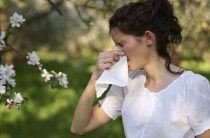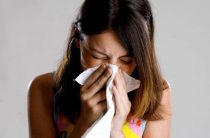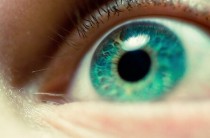With the advent of a child in the family, you need to constantly keep your eyes open, because such an ailment as an allergy very often haunts children.
This can be attributed to the fact that the immunity of the newborn is rather weak and is not able to produce antibodies against allergens. If you do not notice the first symptoms of an allergy in a child in time, then it will eventually become chronic.
Symptoms
As a rule, allergies in children are manifested by:
• cough
• rash
• runny
nose • red eyes
• itchy skin
• peeling
• bloating
• diarrhea or constipation
Causes
The reasons may be varied.
Allergic reactions in a child can be caused by pets, household chemicals, food, mother's diet, plant pollen, dust. Symptoms appear immediately after the child comes into contact with the allergen. To eliminate allergy symptoms such as runny nose and conjunctivitis, doctors recommend using drops and sprays.
What are the drops
There are nasal and eye drops.
Some eye drops can also be used for nasal congestion, since the components that make up their composition are the same. The following subgroups of drops are distinguished:
• antihistamines.
Relieve itching and eliminate lacrimation. • anti-inflammatory.
Remove allergic swelling of the eyes. • Vasoconstrictors. Eliminate soreness of the mucous membrane of the eye.
To prescribe certain drugs to your baby, you should consult a doctor.
Among eye drops, doctors recommend using Vizin or Nafkon-A.
These drugs are quite effective in removing puffiness. Akular drops have anti-inflammatory properties.
In order to eliminate itching and tearing of the eyes, the following drops are used: Azelastine (allowed to be used from 4 years old), Ketotifen (used from the age of three).
Quite effective and safest means are cromones.
Cromones are drugs that stabilize cell membranes. They are also used as a preventive measure. Among them, the following are distinguished:
•
cromohexal - it is allowed to use from 1 year
• cromoglin - from 1 month
• lekrolin is used starting from the age of
four ineffective drops. Sometimes quite simple actions help to eliminate them: • keep the room temperature no higher than 22 degrees
• clean the child's nose every evening
• maintain air humidity
 If, following these simple rules, the symptoms do not disappear, then seek the advice of a doctor.
If, following these simple rules, the symptoms do not disappear, then seek the advice of a doctor.
Medicine in its development does not stop for a minute.
Nowadays, there are many drugs that are allowed even for newborn babies, without harm to their health. Nasal drops for the little ones:
• Salin drops facilitate the child's breathing, eliminate mucus.
There are no side effects from them, since they include a saline solution and a small amount of additional hypoallergenic components • Aquamaris drops are allowed to be used in the very first days of a baby's life.
The composition includes only sea water without any additional components. Vasoconstrictor drops such as Otrivin, Tizin, etc. should be used very carefully.
As a rule, they are prescribed by a doctor for a short time period (from 3 to 7 days), as they are addictive to the mucosa. Among the side effects in children, the following are distinguished: low blood pressure, sleep problems, increased heart rate. They are prescribed to relieve symptoms. Recently, such a drug as Nazaval has begun to enjoy popularity.
This is a fairly new remedy for dealing with allergies. This drug is made on the basis of cellulose fibers. It acts in such a way that it envelops the nasal mucosa, preventing it from contacting the allergen. Drops such as Zodak and Fenistil are used both nasally and as eye drops.
It is allowed to apply to children aged from 1 month. They relieve the symptoms of rhinitis already 10-15 minutes after their application. Also, a child from the first days of his life can be given drops such as Derinat.
Instillation Recommendations
Eye instillation:
• prepare a clean new pipette
• wipe the child's eyes with cotton pads, after wetting them with warm boiled water
• you need to wipe from the outer edge of the eye to the inner one
• move the lower eyelid of the eye
• instill the eye without hitting it with a pipette
Nose instillation:
• clean the nose
• warm the bottle in your palms for a couple of minutes
• the child should tilt his head back
• use a pipette to inject the medicine into the nose.
There are many recipes for nasal drops that you can prepare yourself at home.
Check out some of these recipes:
• For quite a long time there have been disputes between representatives of traditional and traditional medicine that for children under 3 years old, mother's milk will be the most effective remedy. Populists claim that it is mother's milk that has the necessary properties, envelops the nasal mucosa, cleanses it. But doctors of traditional medicine, on the contrary, are opponents of this method of treatment.
• to rinse the baby's nose, it will be enough to use a solution of the most common salt, in proportions of 0.5 tsp per 1 cup of boiled warm water
• use the juice of onion and garlic, previously diluted with boiled water, in order to dry the nasal cavity. This tool can be used by children from 1 year old.
• aloe juice and Kalanchoe
• tinctures of mixtures: chamomile, yarrow, calendula
• beet and carrot juice
• honey dissolved in water or beetroot juice
Sometimes doctors recommend making drops at home if these drops are not able to cope with a child's allergic rhinitis on their own. They should be cooked in small portions. Such mixtures are not intended for long-term storage.
For vasoconstriction, mixtures of Tizin and Farmazolin are often used.
As an antibacterial, it is recommended to mix Okomistin, Ampicillin and Cefriaxone.
In what proportions these mixtures should be prepared are prescribed only by the attending physician of the child.















